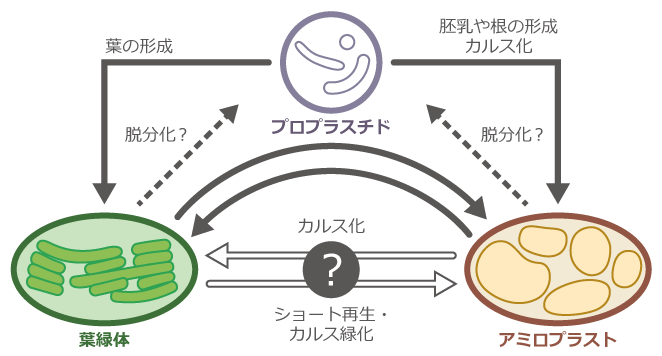
図1
図1.オオムギの再分化の様子
イネ科植物のオオムギは、オーキシンを添加した栄養培地上で暗条件にて培養すると未分化な細胞(カルス)が形成・増殖します。一方、サイトカイニンを添加した栄養培地上でカルスを明条件で培養すると再分化(シュート再生)します。
この写真は、オオムギのカルスから緑色の葉が再分化している様子です。カルスから葉が再生する際、色素体が役割を変えていると考えられます。
Figure 1. Redifferentiation barley.
In barley, undifferentiated cells (callus) proliferate when cultured in the dark on nutrient media supplemented with auxin. When transferred to media containing cytokinin and exposed to light, the callus undergoes redifferentiation (shoot regeneration).
This photo shows green leaves regenerating from barley callus. During this process, plastids are thought to change their functions accordingly.


